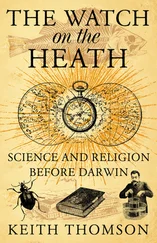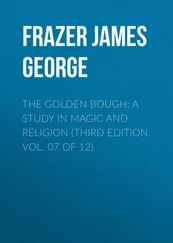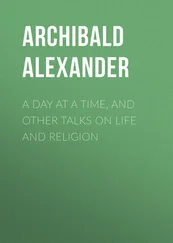Vikernes, Varg - Varg Vikernes - Sorcery and Religion in Ancient Scandinavia
Здесь есть возможность читать онлайн «Vikernes, Varg - Varg Vikernes - Sorcery and Religion in Ancient Scandinavia» весь текст электронной книги совершенно бесплатно (целиком полную версию без сокращений). В некоторых случаях можно слушать аудио, скачать через торрент в формате fb2 и присутствует краткое содержание. Жанр: Старинная литература, на английском языке. Описание произведения, (предисловие) а так же отзывы посетителей доступны на портале библиотеки ЛибКат.
- Название:Varg Vikernes - Sorcery and Religion in Ancient Scandinavia
- Автор:
- Жанр:
- Год:неизвестен
- ISBN:нет данных
- Рейтинг книги:3 / 5. Голосов: 1
-
Избранное:Добавить в избранное
- Отзывы:
-
Ваша оценка:
- 60
- 1
- 2
- 3
- 4
- 5
Varg Vikernes - Sorcery and Religion in Ancient Scandinavia: краткое содержание, описание и аннотация
Предлагаем к чтению аннотацию, описание, краткое содержание или предисловие (зависит от того, что написал сам автор книги «Varg Vikernes - Sorcery and Religion in Ancient Scandinavia»). Если вы не нашли необходимую информацию о книге — напишите в комментариях, мы постараемся отыскать её.
Varg Vikernes - Sorcery and Religion in Ancient Scandinavia — читать онлайн бесплатно полную книгу (весь текст) целиком
Ниже представлен текст книги, разбитый по страницам. Система сохранения места последней прочитанной страницы, позволяет с удобством читать онлайн бесплатно книгу «Varg Vikernes - Sorcery and Religion in Ancient Scandinavia», без необходимости каждый раз заново искать на чём Вы остановились. Поставьте закладку, и сможете в любой момент перейти на страницу, на которой закончили чтение.
Интервал:
Закладка:
The Friday was the day of love, and naturally the day of the goddess of love. The second Friday of every month was the Friday of the week of birth, and was therefore seen as a particularly favourable day for marriage. This Friday, the 13 thday of every month, was also seen as the birthday of the deity. All the thirteen most important deities' birthdays were celebrated in turn, one every month of the year, and every year.
The Saturday was the last day of the week, and was dedicated to Heimdallr, because he was the deity for the principle; "you harvest what you sow". It was not a holiday, but the day everyone had to wash up well, clean the house and get ready for the next week and the holy Sunday. Clean and without any feelings of guilt.
2.2. The Mysteries
The first holiday of the year was New Year's Day, better known in English as Halloween ("initiation evening"), and in Gaelic as Samhain ("summer's end"). The sorcerers and later the gods (i. e. religious kings) and their challengers dressed up as different creatures with access to the realm of the dead. They fasted and hung their clothes in a tree or the gallows, to make it look as if they had hanged themselves. They wounded themselves with a spear, to bleed, smeared ash or white mud all over their bodies to look like the dead, they put on masks and sacrificed a cow or an ox on the grave mound, so that the blood poured down and into the grave underneath; into the realm of the dead. They then blew a horn, in the Bronze Age a lure, to open up the entrance to the realm of the dead. They then travelled into hollow trees, caves in the mountain, holes in the ground, or more commonly into the burial mounds. These were all seen as entrances to the realm of the dead. Inside, in the darkness of the grave, a woman was waiting for them, sprinkled in the sacrificed animal's blood and dressed like the queen of death. They then took at least some of the objects their dead forebears had been buried with and brought them back out.
The Scandinavian mythology tells us many things about this journey, one of them being a journey made by Heimdallr. Before I speak about that I have to tell you more about this mysterious deity. He was originally the spirit of the world tree, the tree growing on the burial mound, and was, when he turned into a deity in the Bronze Age, given the name Haimadalþaz ("world tree", “tree above the bed”). He was also known as Yggdrasill ("that which demands reverence", or "the terrible horse"). He was indeed originally just a tree, but not any tree; he was the tree of sacrifice. The crown of the tree was located in the sky (Ásgarðr), the trunk of the tree on the burial mound (Miðgarðr, since they visited it on the New Year's Day) and the roots in the realm of death (Hel), inside the burial mound. Therefore he was in contact with all the worlds. In the age of mythology he was regarded as a guardian between Heaven and Earth, and resided at the end of the rainbow in the sky – over the North Pole. He had the power to open up all worlds, by blowing his horn, called Gjallarhorn ("the sharp horn", "horn with piercing sounds").
When Baldr was killed by Höðr, using the mistletoe, Heimdallr volunteered to bring him back. The living had no access to the realm of the dead, but the god of death, Óðinn ("thought", "mind", "spirit", "fury"), obviously had. Heimdallr therefore disguised himself as Óðinn, opened up the gate to the realm of the dead and entered in silence. We know him in this context as the god Hermóðr ("Óðinn/spirit impersonator"). When disguised as Óðinn he could mount and ride Óðinn's horse, Sleipnir (a horse only Óðinn could ride), which is the same as the Trojan Horse we know from Greek mythology, sneak past the giant dog guarding the entrance, and get past the giant woman guarding the bridge across the river of forgetfulness. He tried to be quiet, but she still told him that he made more noise than several dead armies walking across the bridge before him had done. He was still alive, behind his disguise, and therefore he naturally made more noise than the dead, no matter how much he tried to be quiet. He rode for nine nights before he finally arrived and could ask the goddess of the dead, Hel, to bring Baldr back to the world of the living. She refused, but Baldr and his wife, Nanna ("eager", "resourceful", "industrious"), gave him two rings and a blanket, to bring back to the living gods as gifts.
In another myth the goddess Íðunn ("eager", "sustainable", "who likes to work", "diligent", "effective", or "recurring work"), the wife of Bragi ("glory", "first", “winner”), has because of Loki's schemes been abducted by the ettin Þjazi ("noisy") to the realm of the dead, to Jötumheimr ("world of hunger"). Íðunn was also known as Nanna and was Baldr's wife. Bragi was just another name for Baldr. When we know this the meaning of the myth becomes clear. In the myth about Baldr's death, Nanna's heart broke in two from grief when she saw the dead body of Baldr. In this myth she was instead abducted. This might sound a bit confusing, but it makes perfect sense; Baldr died when the mistletoe was removed from the oak tree! Þjazi was not another name for Höðr, Baldr's killer, but another name for the mistletoe itself. This is evident when we know that Þjazi was also called Bölþorn ("bad shoot", "bad branch", "painful thorn"). He is the bad shoot, the sacred branch, that contains the life force of Baldr when the oak tree dies. When cut down it killed Baldr and took Íðunn away, to the realm of the dead.
Þjazi was also known as Jörmungandr ("animated cattle", "the mighty stick", "animated staff"), and logically this Jörmungandr, better known as the serpent of Miðgarðr, was a son of Loki -- the lightning that brought the mistletoe to the Earth. In the myth about Þórr and the serpent we learn that Jörmungandr was cast down into the abyss when Þórr hit him in the head with a hammer. The original meaning of the word hammer is "stone", and this is what the spirits in the sky were using to bring about the lightning. They sent the Sun's energy to Earth, when the lightning hit the trees. In a myth about Þjazi Loki was stuck to Þjazi, because he hit him with a stick that got stuck, and he could not let go of it. Loki was the fire from the sky, the lightning, that attached itself to the wood.
Loki was the reason Baldr was killed, and the reason Nanna died from grief. The mistletoe had been cut down from the oak tree, by the sorcerer (by Hoðr, the "blind" man who refused to believe in gods, and instead still practised sorcery), because Loki had given him the life force of the oak tree, the mistletoe, so it was Loki's task to get it back. Like Heimdallr Loki had no access to the realm of the dead, so he had to borrow a "bird skin" from Freyja ("spare", "free", "love"). Just like Heimdallr he disguised himself and used the "bird skin" to gain access. He met Iðunn in the realm of the dead, turned her into a nut and brought her back home.
Yet another myth describing the New Year's Eve holiday's religious content is the myth about Þrýmir ("thunder", "bang"). He had stolen Þórr's hammer and taken it to Jötunheimr, far below the surface of the Earth. Þrýmir is yet another name for Þjazi, whose house is called Þrýmheimr. The power of the Sun is in this myth described as the hammer itself, the force that transfers solar power from Heaven to Earth. Heimdallr advised Þórr and Loki to dress up as women, disguising themselves as Freyja and her maid, to gain access to the Jötunheimr and find the hammer. The god of death had free access to the realm of death, but Freyja had too; of course, she was a goddess of the Earth. Hades was located in the Earth, in her womb. The deities always disguised themselves as the god of death or as Freyja, to find the Sun or the Sun's energy and to bring it back.
Óðinn placed his eye in the grave, in the well of the past, every year, in order to learn from the past. This might sound strange, but his eye was the Sun, Baldr, that lost its power every autumn and therefore had to spend the winter in the world of the dead. In other words; Óðinn had one eye in the world of the living and one eye in the world of the dead, at any time, and he could therefore freely travel between these realms, and was regarded as the god who escorted the spirits of the dead to Hel. Because so many gods disguised themselves as him, to gain access to Hel, many of the myths we know about Óðinn are in fact not about Óðinn himself, but about different gods who disguise themselves as Óðinn. He himself did not undertake these many journeys, but his name was used because it was him they impersonated.
Читать дальшеИнтервал:
Закладка:
Похожие книги на «Varg Vikernes - Sorcery and Religion in Ancient Scandinavia»
Представляем Вашему вниманию похожие книги на «Varg Vikernes - Sorcery and Religion in Ancient Scandinavia» списком для выбора. Мы отобрали схожую по названию и смыслу литературу в надежде предоставить читателям больше вариантов отыскать новые, интересные, ещё непрочитанные произведения.
Обсуждение, отзывы о книге «Varg Vikernes - Sorcery and Religion in Ancient Scandinavia» и просто собственные мнения читателей. Оставьте ваши комментарии, напишите, что Вы думаете о произведении, его смысле или главных героях. Укажите что конкретно понравилось, а что нет, и почему Вы так считаете.












